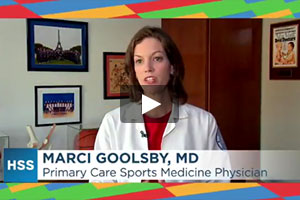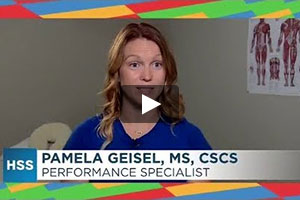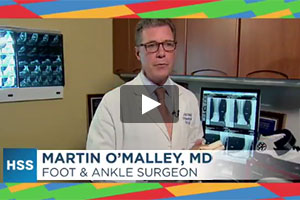Running Injuries and Conditions
HSS is the Official Hospital of TCS New York City Marathon and also the Official Hospital of New York Road Runners. Our sports medicine specialists and physical therapists help elite runners, amateur athletes and recreational joggers come back from injury and improve their performance everyday.
Common running injuries
There are many factors that can contribute to a running injury, including errors in training, improper running shoes, anatomic irregularities or even extreme running surfaces. Additionally, those who are new to running, have recently resumed training after an injury, or have increased running speed or distance are also more susceptible to getting hurt.
Injuries of the knee are especially prevalent among runners. Patellofemoral pain syndrome (PFPS), also known as “runner’s knee,” is one example of a common injury often brought on by overuse. Stress fractures and other conditions of the shin, feet and heels can also develop and amplify if training modifications, proper rest and/or rehabilitation are not carried out.
Video: marathon training tips
Articles related to running
Read about injury prevention and wellness for the casual jogger to the marathon runner, as well as about running-related conditions and treatment options.
- Proper Running Form for Every Part of the Body, from a Running Coach
- Dislocate Your Knee? What to Know About Patellofemoral Instability
- A Guide to Post-Marathon Recovery
- How to Get Into (or Back Into) Running
- Injury Prevention for First-Time Marathon Runners
- How to Know If You’re Staying Hydrated While Running
- How to Prepare Your Kids for Injury-Free Running
- Yoga Cool Down Stretches for Runners
- Yoga for Runners: How to Use Yoga to Improve Your Runs
- Five Tips for Preventing Runner's Knee
- Running Back-to-Back Marathons? Try This Training Plan
- Common Conditions of the Foot and Ankle: An Overview
- Patellofemoral Instability
- Patellofemoral Disorders: An Overview
- The High Ankle Sprain: What's the Difference?
Running Injuries and Conditions Success Stories
In the news


